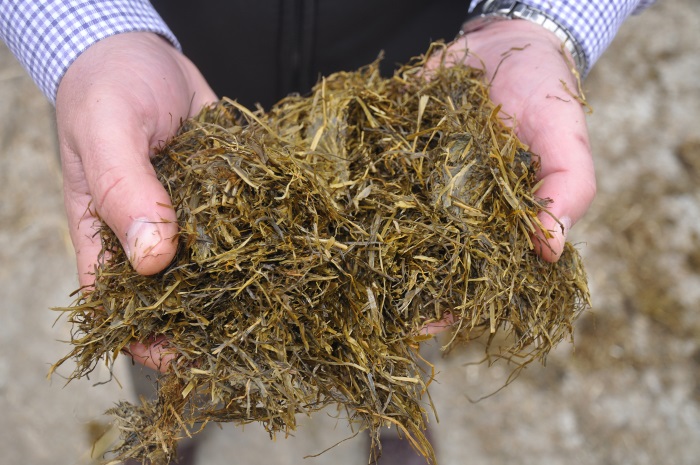At least 9 out of 10 farmers see forage and better use of grass silage as playing central roles in the future of their businesses. But in several vital areas of grass and silage production, farmers are falling short.
Those were the clear messages from experts at a recent industry briefing, to help farmers get more from forage and silage, and following two separate farmer surveys.
According to Ben Wixey, national agricultural sales manager for forage experts Germinal GB, 98% of the 560 UK livestock farmers taking part in the 2016 Forage Use Survey ranked forage as the most important or one of the most important factors in their long-term farm business sustainability. Two-thirds of respondents said they were actively striving to do a better job with forage management.
Despite these very clear statements of intent, the rate of reseeding grassland is, on average, well below that required to maintain swards in anything close to maximum productivity.
“Only one in five of the livestock farmers taking part in the survey stated they were reseeding more than 10% of their grassland each year,” added Ben Wixey, “and almost half were reseeding less than 5% each year. This clearly points to significant lost potential, but more importantly a great opportunity for the industry to do better.”
These results were echoed in a separate survey of over 100 dairy farmers, said, Derek Nelson, product manager for animal nutrition and silage experts, Volac – which found that, despite high levels of concern about future volatility in milk price and feed costs, and 90% of farmers rating greater use of grass silage as extremely or very important in helping to reduce bought-in feed costs, there were worrying shortcomings in silage-making techniques.
“Clearly, producing good grass and good silage makes a lot of sense for improving farm business sustainability,” said Derek Nelson. “But if farmers are to genuinely increase milk production from home-grown forage and reduce bought-in feed use, it will be essential to address these shortcomings.
“More than 80% of dairy farmers in the survey were looking to reduce bought-in feed costs. However UK silage quality does not seem to be improving,” he added.
In response, Mr Nelson said Volac is launching a new ‘Cut to Clamp’ initiative this spring aimed at helping farmers produce consistently better silage by focusing on best practice in six key areas: cutting, wilting, treating, harvesting, clamping and feeding. Several of these were problem areas in the survey, he pointed out.
Citing examples, he said the survey found nearly one in five farmers was cutting first cut grass either at heading or afterwards. Although this increases yield, it compromises quality, and therefore potential milk production, he said.
“Similarly, nearly 80% of dairy farmers in the survey were wilting for 24 hours or longer. But the objective should be to wilt as quickly as possible to 28-32% dry matter, which may take less than 24 hours. The longer you wilt, the more vital sugars are lost.”
More worryingly, Mr Nelson said the survey highlighted some poor understanding of fermentation to preserve grass silage – with only 40% of farmers recognising that a good fermentation converts some of the crop’s sugars into acid, and nearly a quarter not recognising that it was important to exclude air. “These issues, plus others, are some of the key areas that Cut to Clamp aims to address.”
Supporting Derek Nelson’s overriding quest for better forage quality, Ben Wixey stressed the importance of starting with the right raw material, something that can only be achieved if swards are in the best possible state. He pointed out that under most circumstances, reseeding offers a rapid return on investment.
“Reseeding more regularly will ensure more of the grass being harvested will be the original sown species, as opposed to weed species, so there will be a tangible increase in the value of the crop,” he said. “Even assuming quite modest increases in dry matter and D-value, the extra performance achievable from the higher quality forage will often pay for the reseed in the first year.”
Cut to Clamp will be rolled out over coming months via a dedicated website, videos and tools to help farmers benchmark their silage-making, and via a number of silage audits carried out by Volac on-farm experts, Derek Nelson said.


